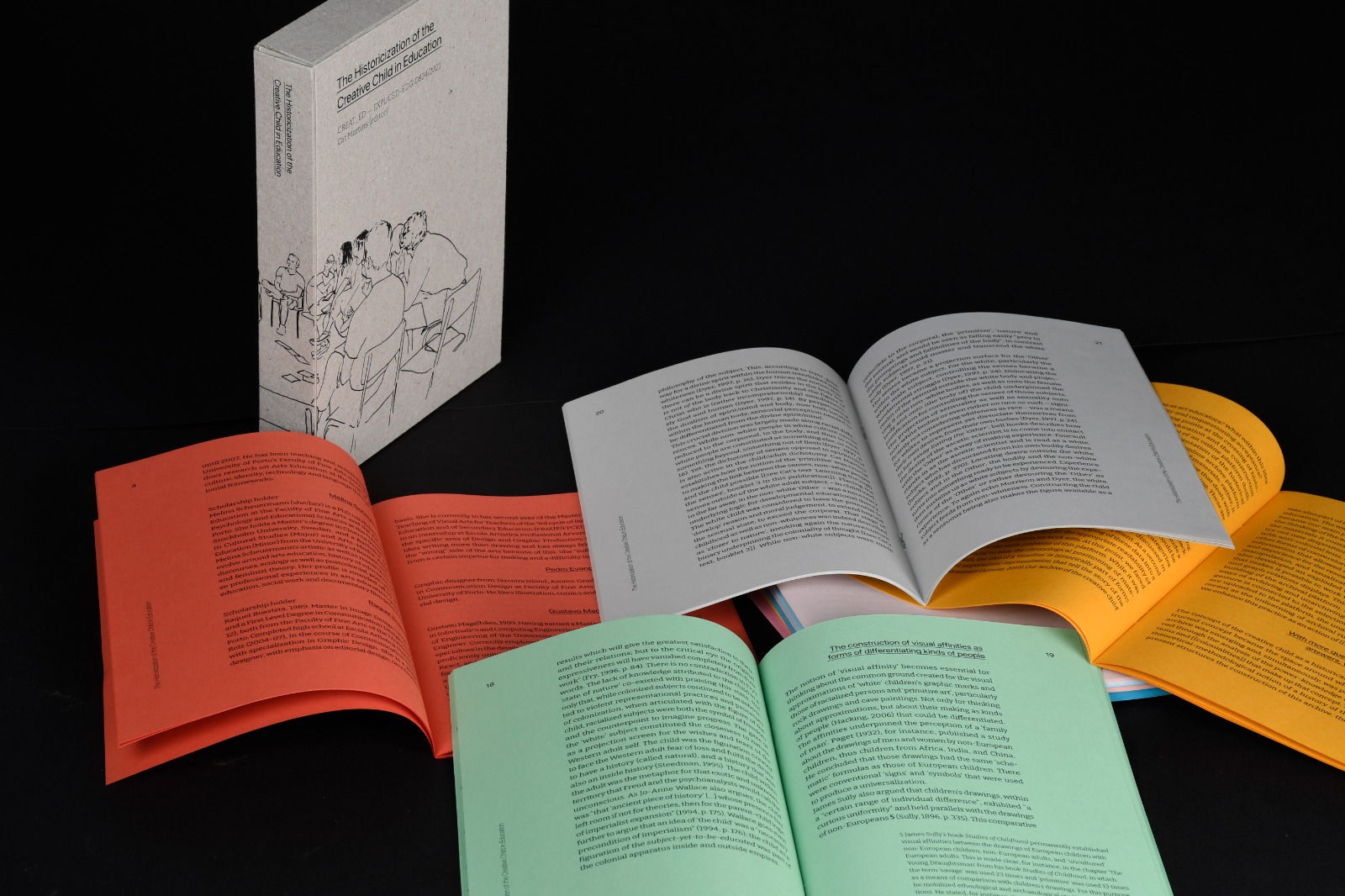
livro
The Historicization of the Creative Child in Education
This publication results from the research done in the last 11 year and a half in the scope of the Exploratory Project The Historicization of the Creative Child in Education (CREAT_ED), funded by the Portuguese Science Foundation. The project aimed to understand, historically, how the idea of the child as a creative being became a problem in education and arts education.
- Edição
- Cat Martins
- Ano
- 2023
- isbn | issn
- 978-989-9049-53-6
- doi
- https://doi.org/10.34626/2023/978-989-9049-53-6
CREAT_ED started from the work we have been develo- ping as a critique of how creativity is instrumentalized within the current Portuguese educational field, mirro- ring international directives. This work (Assis, 2017, 2019; Martins, 2014, 2020b, 2020a) allowed us to perceive that some complex lines make this ‘present’ possible and that they needed to be historicized (Popkewitz, 2013) from the end of the 18th century to the Post World War II, from a time when imagination and creativity occupied an ambi- guous place within the educational discourses, to their commodification and homogenization.
Throughout the project, we look at the creative child as an ‘event’, in order to not take for granted creativity as an essentialist concept. Following a Foucaultian perspective (Foucault, 1972, 1980), the omnipresent question was: How is it possible to think about the child as a creative person, and what are the effects produced in the making of the creative child? Historically, developing the child’s creativity was not always seen as an educational goal. When it turned into an educational problem, the notion of creativity varied in terms of its purposes, practices, and meanings. As an ‘event’ the creative child is also an archive of thoughts and rationalities of times and spaces. The different layers that made up the child, creativity, and the child as a creative being, tend to be forgotten as ‘ingredients’ with specific properties (Martins & Popkewitz, 2015). What remains is the idea: childhood is the space and time for creativity.
However, even if different notions of who the child was, who the child should become, and how the child learned changed throughout history, the context needed to unleash the child’s creative nature, or to tame that potential, has been conceived as the field of arts education.
A history of the present of arts education aims at a critical engagement with the present. In the present, creativity appears wrapped in a positivity that makes difficult to scrutinize the different layers that constitute it as a technology of government and as a way of being a person (Martins, 2023). Creativity is not just a word. It is an actor in the world (Hacking, 2006). The invention of the creative child made possible the Western arts education movement and the epistemological construction of the field at an international level. At the same time, it made possible a certain kind of human, that is the child that is seen as naturally creative.
CREAT_ED tried to examine the ideas and pedagogical practices that circulated among American and European arts educational discourses and psycho-educational texts about the development of the creative nature of the child as an object of study, intervention, and development, and how ruptures and continuities were enhanced. The project focused on the rationalities inherent to this ‘making’ and their strategies, such as the comparative reasoning and the processes of ‘Othering’ it entailed.
Retrieved from Introduction to ‘The Historicization of the Creative Child in Education’
Cat Martins
2023